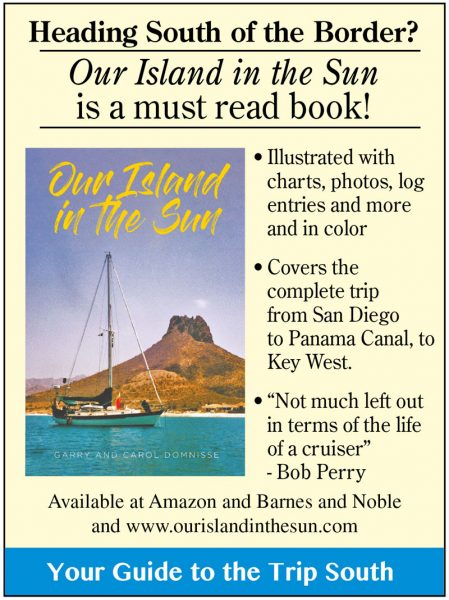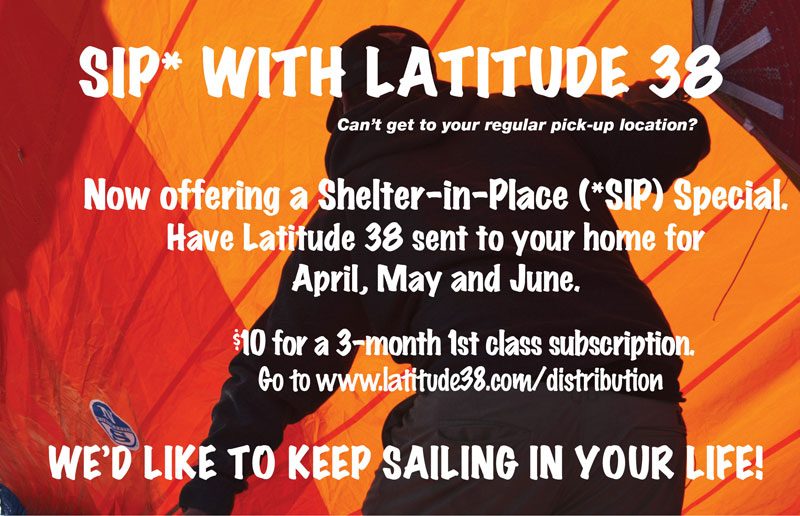
State Will Impose High-Impact Waterfront Development
After years of fierce debate over waterfront development, contentious city council meetings throughout the West Coast, and an existential battle over the soul of our shores, the State of California has issued a sweeping decree mandating major, high-use construction in seaside towns. Soon, high-rise hotels, condos and the accoutrements of gentrification — such as taprooms and coffee houses — might not be just a possibility in waterfront cities, but a requirement.
A new bill recently passed by the California State Legislature has cleared the way for large-scale, high-impact development, effectively removing municipalities from their own planning processes, and centralizing control at the state level.
In the crosshairs of the new law are some of Marin County’s most sacred jewels, including the city of Sausalito and Travis Marina, the latter of which has already been earmarked for transformation into a dense, futuristic cityscape.
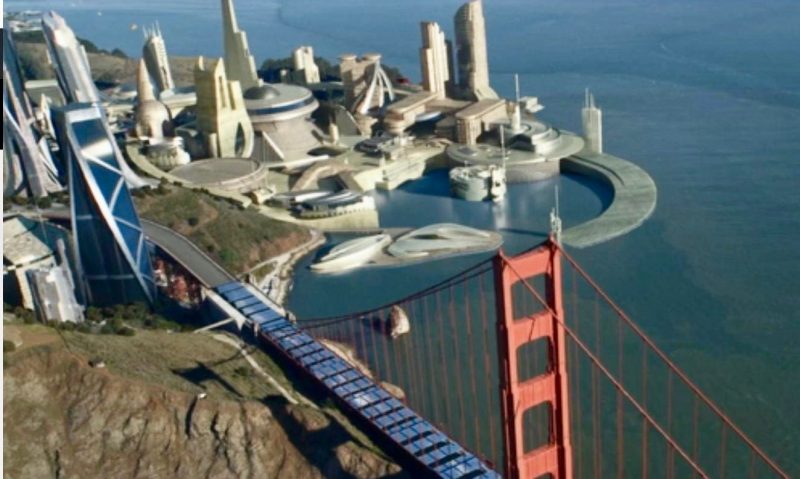
Boating infrastructure, marine businesses, and the very character of communities forged by centuries of saltiness are all but doomed to become extinct in favor of an evolution toward ‘modern’ urbanity.
“It’s time to end the exhaustive debates over development, and come together behind a single vision for the future,” said one state lawmaker, who spoke to Latitude on condition of anonymity. We pressed the lawmaker further by bringing up the elephant in the room: Isn’t this bill nothing more than a draconian measure that ignores the will of the people?
“The people’s will has become too convoluted to effectively govern, or to efficiently plan for a city’s future. It’s time to do what’s in the best interest of the people: remove people from the equation.”
We spoke to another member of the legislature — who identified themselves as a sailor, and also spoke to us anonymously — about where sailing and maritime culture might fit into this new model for the future. “We plan to have sailing museums in the lobby of every waterfront condominium complex and convention center,” the member told us. “Maritime culture will be well represented in the general decor of seaside homes, bars and businesses. Frankly, we think this is a fantastic opportunity for sailors to liquidate their boats and gear by selling it all on Craigslist, so that someday, they can enjoy it decorating the walls of their new, high-scale neighborhood microbrewery.”
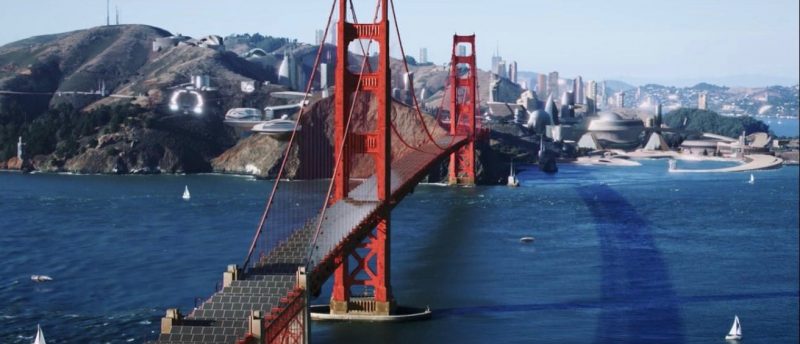
The greatest loss might be Travis Marina (at Horseshoe Cove), the fate of which was already up in the air due to a tenuous lease for both the marina and shoreside facilities. Both lawmakers told us that even if the “life” of the marina had been extended through some kind of commitment to affordable boating infrastructure, its development was, nevertheless, inevitable.
“Look, in the end, the development of Bay Area shoresides is inescapable,” one of the lawmakers said. “It’s time that people accept not the future they want, but the future that they’re destined to have.”
— latitude / mark frankle, senior investigative reporter
Couple on 34-ft Sailboat Say They Will Continue Self-Isolating from Each Other for Duration of Marriage
Amanda and Tony Henderson were only 14 days into the start of their new cruising life — and just four months into their marriage — when the mandate to shelter in place with immediate family was announced.
Despite their initial commitment to each other, and to public-health guidelines, the couple found that spending all of their time together in a 34-ft space pushed them to wits’ end.
“The final straw for me was when I had retreated outside to enjoy a sundowner after a long day of boat projects,“ said Amanda. “I just wanted a peaceful moment alone, but he emerged from the companionway, strolled to the side deck immediately behind my head, and began to relieve himself.”
Tony remembers things differently. “She has no racing background, and no regard for keeping the leeward side of the boat free for use as the ‘outside head’.” When asked to elaborate, the couple eagerly disclosed a long, contentious list of grievances. Tony added, “Since we had to remain in our ‘bubble’, she dragged me to the grocery store for what she deemed ‘essential’ provisioning, saying she couldn’t carry it all back herself. We spent six and a half hours there, but only bought two boxes of gluten-free cookies, a bag of mixed nuts, and a small jar of organic wildflower honey.” (Both parties insisted on elaborating their affronts, but Latitude has chosen to abbreviate our reporting so as to remain neutral.)
When the coronavirus pandemic brought the world to a halt — and social distancing became the standing order for all humanity — the Hendersons decided to permanently incorporate the mandate into all aspects of their relationship.
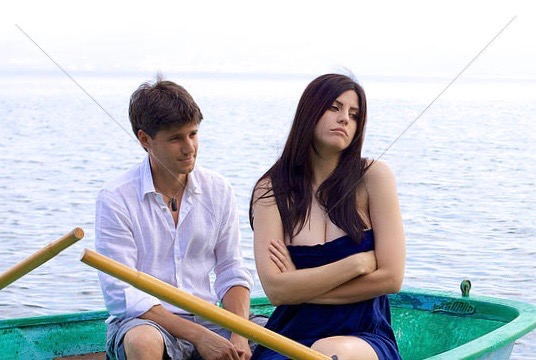
“This makes sense to us; two-meters (6.56 feet) distance, and minimal talking,” Amanda said. Latitude 38 had to remind Amanda that speaking is not expressly prohibited under most public-health authorities’ social-distancing guidelines. “Better safe than sorry,” Amanda said.
Tony agreed. “We find that we get along better when we don’t have any contact.”
The Hendersons said that, given the buffer prescribed by self-isolating standards, their marriage will only benefit in the long run. “We love each other very much,” both Amanda and Tony told us. “But when you’re on a 34-ft sailboat — and you’re married — you really need to keep your distance.”
— latitude / sherry shearwater, cruising-relationship correspondent
Cantankerous Skipper Finds Trolling on Social Media Adequate Substitute for Racing
Following the cancellation of races at his local yacht club, Chad Johnston felt empty. “There are emotions you can only express on the water,” Johnston said. “Sometimes, you just need to scream STARBOARD, threaten to protest something, or berate one of your crew for being slow to trim out of a tack.”
Johnston was relieved when, during his quarantine, he found Twitter, Facebook and Instagram. “If you’re looking for a place to express unchecked and unnecessarily aggressive emotions, it turns out that social media are even better than the race course,” Johnston said, adding that since the quarantine had begun, he’d instigated now-ongoing arguments with a number of strangers over superfluous, even irrelevant details.
“It’s great!” Johnston said excitedly. “People will fight with you over anything. People will give you the finger or insult your family over absolutely anything. It’s just like a tight mark rounding!” Johnston said he was delighted to discover the diverse emoji vocabulary now available, as well as all caps. “It’s like yelling in type,” he said. “AND VIRTUALLY AS SATISFYING AS SCREAMING AT THE TOP OF YOUR LUNGS!”

“There is, however, a limit to the satisfaction I can get from social media,” Johnston noted. “Unlike the race course, people can just . . . ignore you on the internet.” Johnston was shocked and dismayed to discover that ‘blocking’ and ‘unfollowing’ provided an escape for one’s opponent during a contentious argument.
“It’s been good to stay sharp on Facebook,” Johnston said. “But I can’t wait to get back on the water. At least my crew can’t ignore me.”
— latitude / him tenry, newsroom intern
Latitude Nation — April Fools! These three stories are entirely fictitious, even if, in some cases, they’re not that far-fetched. We know these are serious and scary times, but we hope that we made you laugh. Be well. Be safe. Be kind.
And please, wash your hands.
A Solution for the Crowded Waters of Newport Bay
Newport Beach city councilmember Marshall Duffield has a new plan to ease congestion on Newport Bay: The Ocean Loop.
The Ocean Loop is a planned system of electromagnetic rails installed on the bottom of the harbor that will allow vessels with a corresponding magnetic hull strip to travel along the rail’s predetermined route. The plan was conceived with the help of Elon Musk, and is loosely based on his Hyperloop technology. Rental boats, as well as private vessels, will be able to use the system.
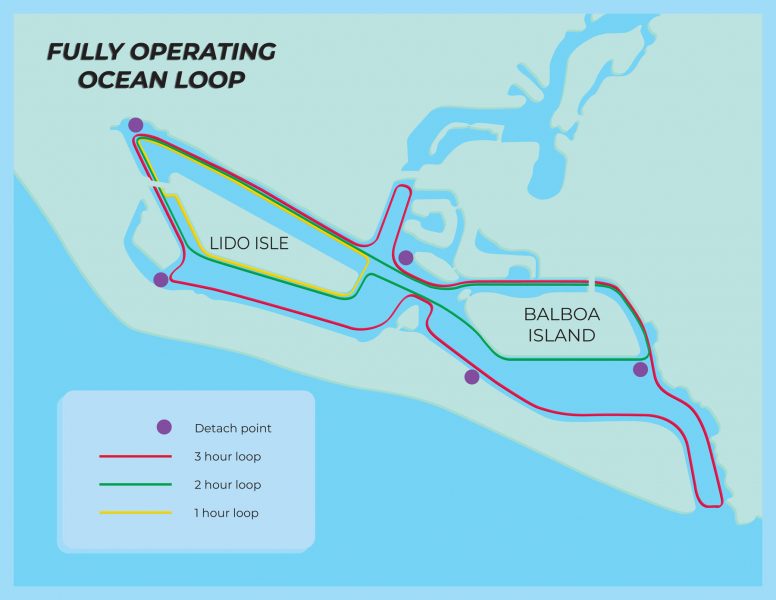
Boats traveling on the loop will be able to detach from the set route at popular spots (see graphic), such as the Winery, the Cannery, the Fun Zone and rental facilities. Tourists and locals alike will be able to cruise the bay, free to drink and sightsee, unencumbered by the responsibility of driving.
The new system will run at 4 mph, slightly under the maximum 5-mph limit in the bay. A light scheme, similar to land-based traffic lights, will be installed in congested areas to avoid collisions near the Balboa ferry, the charter boat docks and the entrance to the Rhine Channel.
A source close to the entrepreneurs reports their only disappointment was eliminating plans to run the loop around the Newport entrance buoy, due to unpredictable weather outside the harbor. Inspired by the Finding Nemo submarine ride while visiting Disneyland with his grandchildren, councilmember Duffield contacted Musk and explained his plan. Musk enthusiastically embraced the challenge; shortly after their first meeting, he and Duffield got to work.
Leveraging past projects, the technology was surprisingly easy to develop. Both men tapped their extensive networks to expedite the approval process. The plan garnered the enthusiastic support of the Coastal Commission, the Army Corps of Engineers, the US Coast Guard and city planners. The Coast Guard, in particular, is excited by the idea, and is reportedly planning a feasibility study to see if other harbors can utilize the technology.
The “Fully Operating Ocean Loop,” as it has been named, will take about three years and $210 million to construct. The city will supply the rails and sell the electromagnetic strips to those who wish to take advantage of this new attraction. Costs are expected to be recouped by sales of the strips and a transponder that is similar to a FasTrak pass. Both will be available starting April 1, 2021.
Yeah . . . April Fools again! This story was also completely fabricated.
Our Island in the Sun by Garry Domnisse
Buy direct from the author and save: www.ourislandinthesun.com.
It’s a Different Sort of Latitude 38 Delivery Day
On a normal Latitude 38 delivery day, we joyously post on ‘Lectronic Latitude that you should run to your favorite marine business to pick up the new issue.
But this is not a normal delivery day. The magazine is being distributed, but as we shelter in place, we feel it’s only right to say: Don’t go get your copy until it is safe to do so. We have contacted almost all of our 800 distribution points to let them know the magazines are coming, and ask them to hang on to them until you can safely stop by. Many businesses are, of course, closed or working with restricted hours and access. But everyone’s assured us that the magazines will be there when you can finally get there.
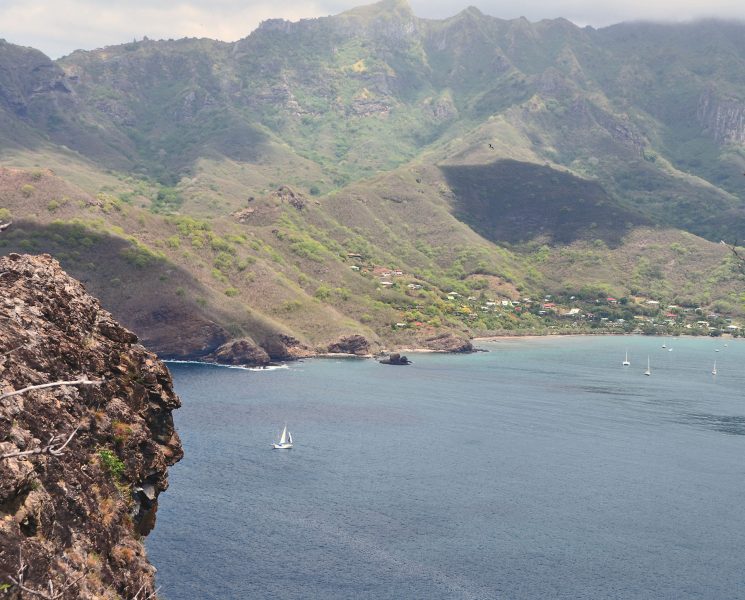
None of this means you can’t read the April issue. In fact, issues of Latitude are online back to 2005. (We’re working on getting every single issue into digital form. Stay tuned.) You can read the new April issue right here. It’s full of all of your letters, and insights from the increasingly restricted world of Pacific cruising, from New Zealand to Nuku Hiva. We have stories about a new Wylie 60 being built for Charles Ray by Jim Betts, the Sea Scouts’ week-long trip on the schooner Seaward, a family gearing up to sail the Pacific Cup, and, in Dollars and Sense, how to afford the cruising dream.
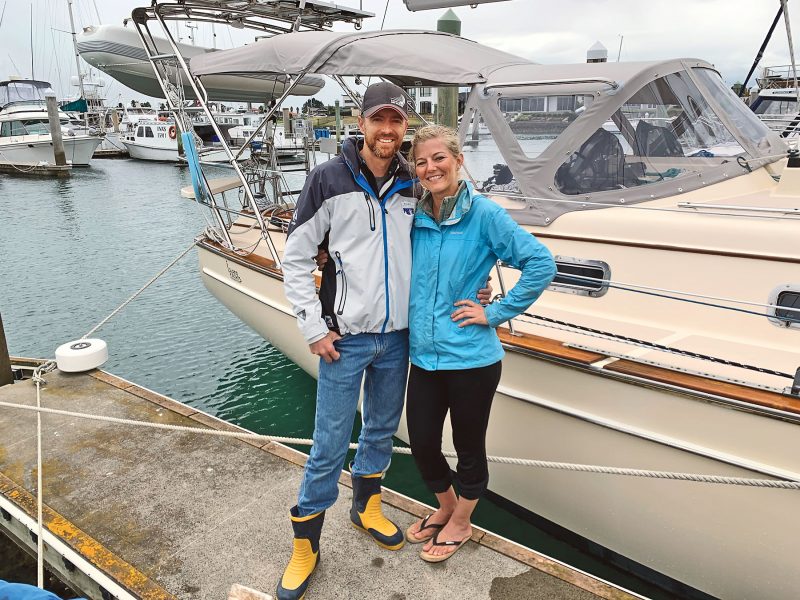
Happily, the April issue includes lots of race reports, including Paul Marston’s dispatch from the San Diego to Puerto Vallarta Race and MEXORC, and another Racing Sheet full of local racing. If you have some fun photos from races in the past, some things you’re doing now to prepare for races in the future, or other general racing news, we’ll try to include them after our race-less month of April. Please send them here.
If you want to read the digital edition on your phone or tablet, you can download an app from our digital magazine service, Issuu. Get the iOS version here and the Android version here.
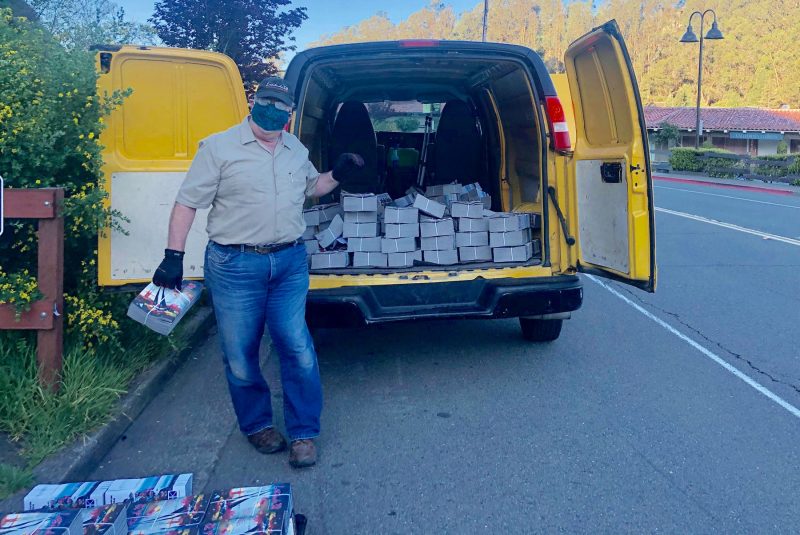
While we want you to know the magazines will be on newsstands and at the harbormaster’s office, etc., please pick one up only if you’re checking on your boat, or taking a safe walk on the waterfront or near a marine business. If not, the mag will be there when the time is right.
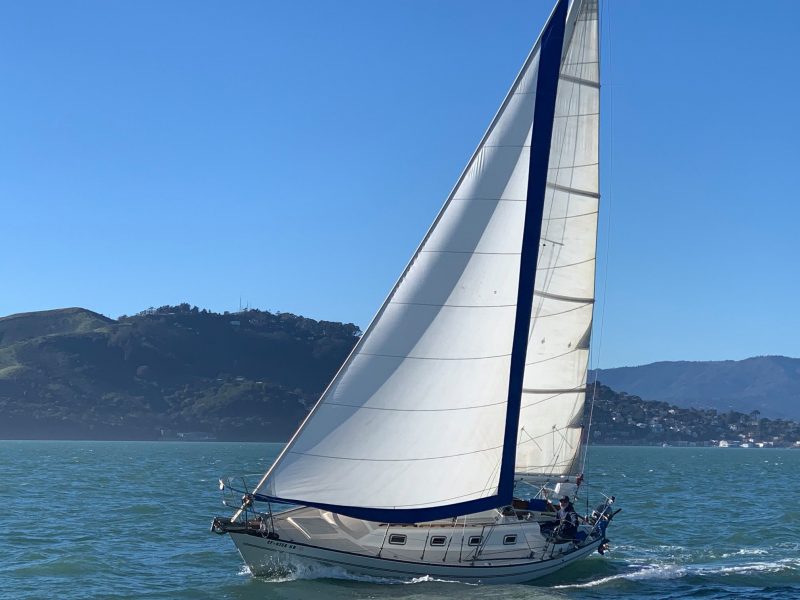
In the long run, we can’t wait to resume some semblance of normal life. We want to go sailing, tell sailing stories, and see a horizon clear of the dark clouds that have been hanging over our heads. But in the short term, we know we all have to set sailing aside. We are fully on board with supporting the health of society and following the recommendations of the medical experts. We want doctors, nurses and the front-line responders to have the best possible shot at saving the lives of others and themselves. We want you and your family, friends and neighbors to ride out this storm safely — for now, that’s our most important mission.
We’ll also remind you, if you lived in Maine, not sailing in April would be perfectly normal. Winter is why northerners have such a love of summer sailing. The pause we all take now will make summer sailing all that much more rewarding. Enjoy the April issue online, and then again when you next cross tacks with the real thing.
Fair winds and following seas.
News of California Offshore Race Week and More
Sorry folks, these news bytes are no joke.
Opening Day on San Francisco Bay
PICYA has announced that the 2020 Opening Day on the Bay is postponed until further notice. “All organized events on the Bay are at a full halt,” writes Patti Mangan, vice commodore of PICYA. Opening Day on the Bay had been scheduled for the last Sunday in April, the 26th.
California Offshore Race Week Canceled! (*sob*)
The California Offshore Race Week organizers — San Diego Yacht Club, Santa Barbara YC, Monterey Peninsula YC and Encinal YC — have made the difficult decision to cancel the 2020 California Offshore Race Week due to the COVID-19 pandemic. “We would like to say thank you to all competitors for their support, encouragement and understanding as we have navigated this unprecedented and uncertain time. Please visit www.offshoreraceweek.com for more information.”
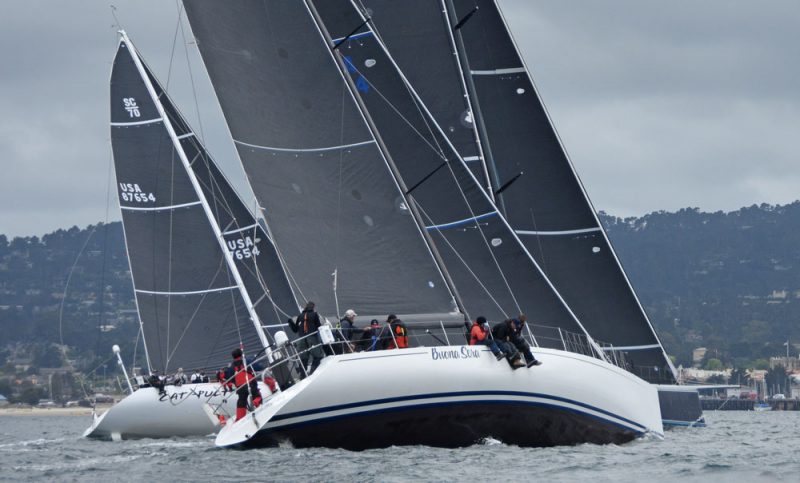
CORW was to have started on Friday, May 23, with the Spinnaker Cup from San Francisco Bay to Monterey. San Diego is the ultimate destination.
Transpac Tahiti Postponed
Postponed for now, but hopefully to be rescheduled at a later date, is the Transpac Tahiti. The 3,570-mile race from Los Angeles to Tahiti was supposed to start on May 28. Ten boats — eight monohulls and two multihulls — had entered the race, which has been held only 14 times since its inaugural edition in 1925. The entries range in size from Jim Partridge’s Antrim 49 Rapid Transit to Steve Meheen’s Botin 80 Cabrón.
“There is a lot of interest in going to Auckland for the next America’s Cup in 2021,” said entry chair Dave Cort, “and some want to use this race to get to the South Pacific and keep going west. We may see more interest in entering among those with this agenda.”
The Atlantic Cup and the Kids
Manuka Sports Event Management canceled the 2020 Atlantic Cup, which had been scheduled to take place June 5-21. But there is some good news: “With the support of 11th Hour Racing, we are continuing to provide robust Atlantic Cup Kids programming via https://atlanticcup.org/kids,” writes Julianna Barbieri. “There are multiple learning modules with worksheets and videos for kids ages 8-13. In addition, the Atlantic Cup Kids classroom visits are going virtual. Classroom visits feature Captain Dave Rearick teaching kids about offshore sailing, wildlife, ocean health and his experience of sailing around the world alone.” To schedule a visit, contact Barbieri at [email protected].
Virtual Education and Enrichment
As we shelter in place and catch up on our reading, studying, streaming and viewing, it occurs to us that it is like we are having a second winter season — without, alas, any midwinter racing! Below are some suggestions to help youngsters and adults enhance their maritime education.
San Francisco Maritime National Park Association
Youth maritime education goes online. According to the inaugural electronic edition of edition of Maritime Stories and Education, “There will be no idle hands on THIS ship! The SF Maritime Association is proud to provide teachers, parents and youth with a new online maritime education center. You can browse many maritime videos and learn knot-tying and rigging cargo to name just a few activities. Enjoy mates!” Navigate on over to https://maritime.org/education/online-learning.
Adults can read stories, do research, browse museum collections, and sign up for the newsletter at https://maritime.org.
Boating Clean and Green
You can add to your viewing list this batch of educational videos about clean boating:
- Oil and Fuel Discharges. How to report oil and chemical spills; how to properly dispose of used oil; environmental laws; and information on other clean and safe boating practices recommended for before, during and after fueling boats.
- Marine Sanitation Devices and Y-Valves to educate boaters on the harmful effects of discharging sewage overboard.
- Sewage Management
Also from California Boating Clean and Green is the Dockwalker Training Program. These trainings normally happen in waterfront venues around the state, but now they’ve gone online using the Zoom video conferencing system. You will be able to see the instructor live and ask questions.
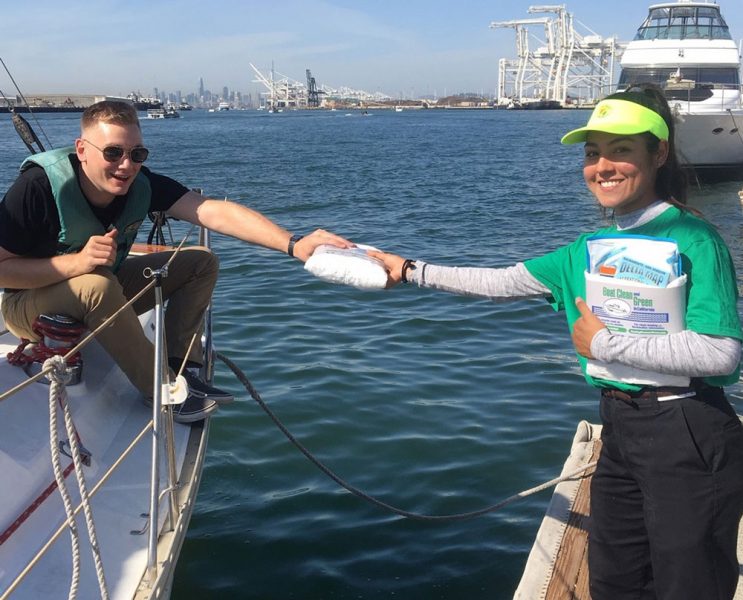
Virtual Dockwalker trainings scheduled for Northern California:
- Saturday, April 4, 9:45 a.m.-12:45 p.m.
- Saturday, April 18, 9:45 a.m.-12:45 p.m.
- Saturday, May 2, 9:45 a.m. to 12:45 p.m.
Southern California:
- Saturday, April 25, 9:45 a.m. to 12:45 p.m.
- Saturday, May 9, 9:45 a.m. to 12:45 p.m.
You’ll need a computer with internet access and the computer’s speaker and microphone or a phone to call in. You do not have to have a Zoom account to attend a Zoom video conference meeting. Once you get the link, you’ll be prompted to download the software. It’s quick and easy.
Register for one of the virtual trainings mentioned above by emailing Vivian Matuk at [email protected]. Include your name, organization (if applicable), address and phone number, and which training you want to ‘attend’. The trainings are free.
Dockwalkers, who can be age 15 on up, share clean boating information with boaters and distribute educational 2020 California Boater Kits while visiting marinas, launch ramps, marine supply stores, boat shows and special events.
ASA Webinars
Not free but pretty cheap are American Sailing Association’s webinars. (They’re $20 or $30 each depending on whether you’re a member.) Peter Isler leads these three premieres this week:
- Sailing Safety — A Personal Perspective
Thursday, April 2, 6 p.m. PDT - A Busman’s Holiday — A Balearic Island Cruise
Saturday, April 4, 6 p.m. PDT - Cruising Easy – Sailing Tips from an Expert
Tuesday, April 7, 6 p.m. PDT
We may remember 2020 as the year with two winters and no spring, but hopefully we’ll get a busy and active summer filled with sailing in the sun — or fog, if you happen to sail in San Francisco!

